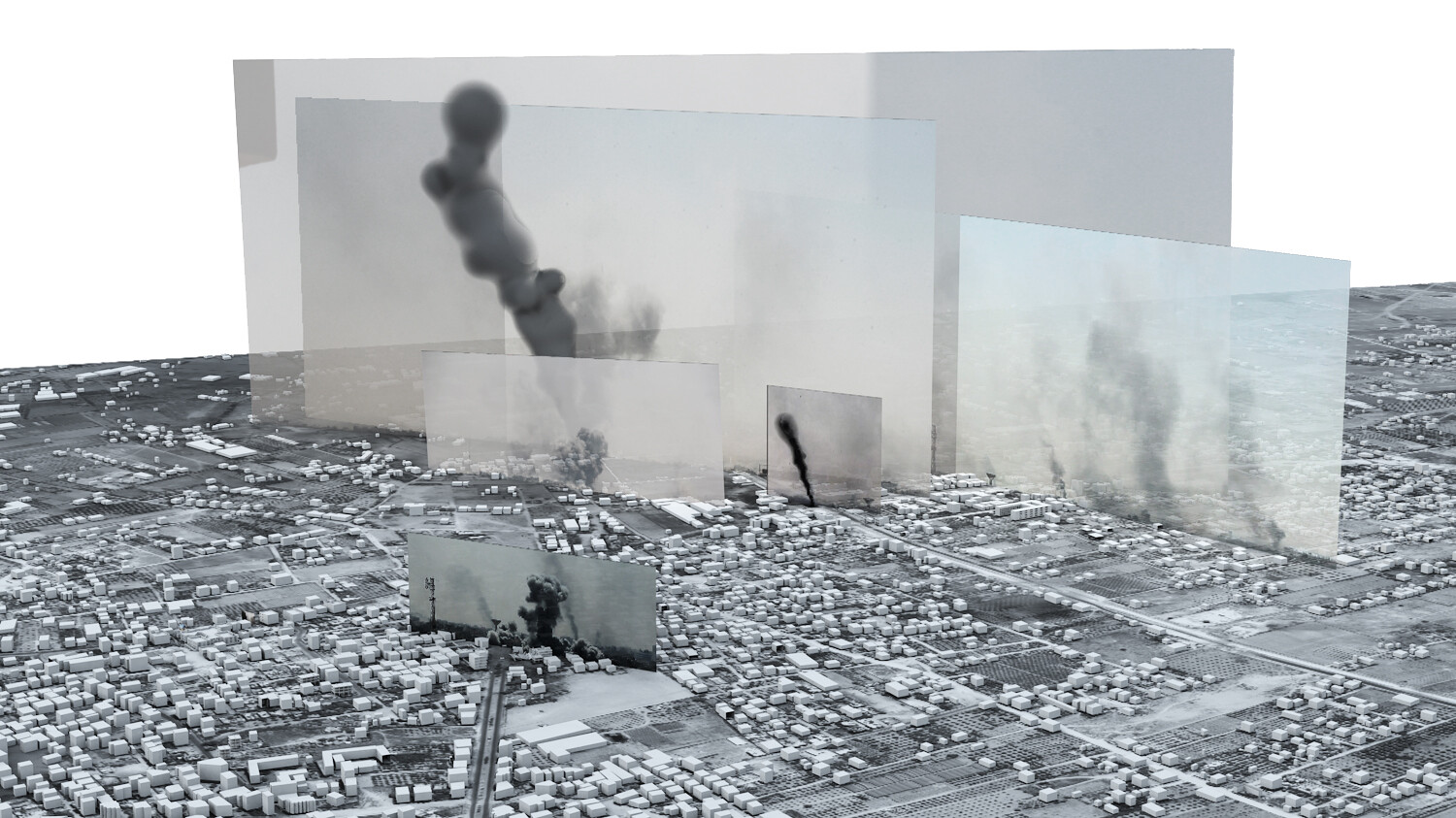Towards an Investigative Aesthetics
April 28–October 15, 2017
Plaça dels Àngels, 1
08001 Barcelona
Spain
macba@macba.cat
MACBA Museu d’Art Contemporani de Barcelona is pleased to announce the opening of its exhibition Forensic Architecture: Towards an Investigative Aesthetics.
Forensic Architecture: Towards an Investigative Aesthetics presents the work of the architects, artists, filmmakers and investigative-journalists who make up the Forensic Architecture agency at the Centre for Research Architecture at Goldsmiths, University of London, as well as that of its collaborators and guests. Established in 2010, Forensic Architecture uses architectural analysis, models and animations as investigative tools, primarily for the production and presentation of spatial evidence in the context of armed conflict and political struggles. Evidences are presented in political and legal contexts, including international courts, truth commissions, and human and environmental forums.
Both “forensics” and “architecture” refer to well-established disciplinary frames. Brought together, they shift each other’s meaning, giving rise to a different mode of practice. While architecture adds an essential method of investigation, forensics demands that architects pay the closest attention to the materiality of the built environment and its media representation.
This exhibition occupies most of the museum’s second floor. The 100-metre-long back wall, traversing the entire exhibition across three galleries, has been conceived of as an extended essay that echoes the investigations included in the galleries, presenting the kind of theoretical and methodological reflection that contemporary investigative aesthetics demands today. The investigations are arranged according to scale, beginning with the human body and moving through rooms, buildings and cities to territories and oceans, from micro-analysis to the scale of the planet—the ultimate forensic object, which human-induced climate change has transformed into both a construction site and a ruin.
While exploring the development and transformation of the investigative practice that bears its name, the exhibition challenges us to consider how contemporary aesthetic practices and media technologies can be geared up to engage this reality of post-truth.
Related activities
Inaugural conversation
Evidence, Activism and the Law in the Age of Post-Truth
Baltasar Garzón in conversation with Yolanda Álvarez and Manuel Vergara, with the participation of Rosario Güiraldes and Eyal Weizman (Forensic Architecture).
Thursday, April 27, 5:30pm
Meier Auditorium. Free admission. Limited places. With simultaneous translation. This activity will be live streamed.
Let’s talk about…
The Role of the Document: Activating Archives
With Julia Ramírez Blanco
Saturdays, April 29 and June 3, 7pm
Free with Amic card. Limited places. Advance booking: www.macba.cat.
If the archive can be used to tell a story, it can also be activated as proof. Julia Ramírez reflects on the role of the image as a historical witness.
Seminar
Forensic Architecture
With Matthew Fuller, Hannah Meszaros Martin, Susan Schuppli and Eyal Weizman
This seminar focuses on the methodology developed by Forensic Architecture through various case studies to highlight the relevance of art in research on human rights, war conflicts and ecocide.
Wednesday, June 14
Free with Amic card. Limited places. Advance booking: www.macba.cat. In English with simultaneous translation. This activity will be live streamed.
Publication
Forensic Architecture. Hacia una estética investigativa. Texts by Cuauhtémoc Medina and Ferran Barenblit, Eyal Weizman, Rosario Güiraldes, and a selection of investigations. Barcelona: MACBA; Mexico City: MUAC/UNAM, 2017.
Exhibition by: Forensic Architecture
Director: Eyal Weizman
Curator: Rosario Güiraldes
Conceptualisation: Eyal Weizman, Rosario Güiraldes, Anselm Franke, Christina Varvia
Forensic Architecture exhibition team: Rosario Guiraldes (coordinator), Christina Varvia, Samaneh Moafi, Ariel Caine, Hana Rizvanolli
Graphic Design: Other Means

